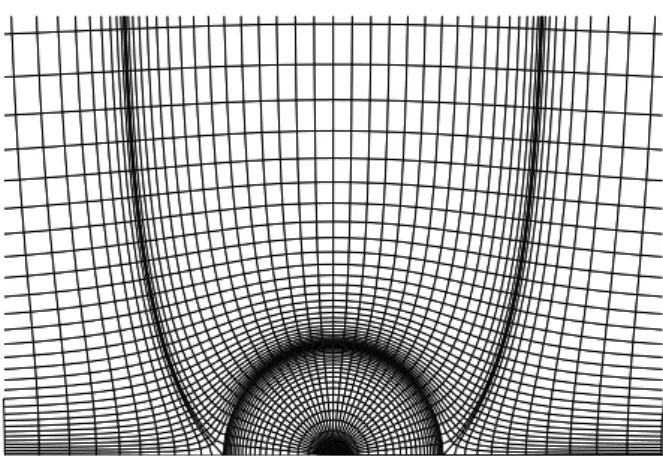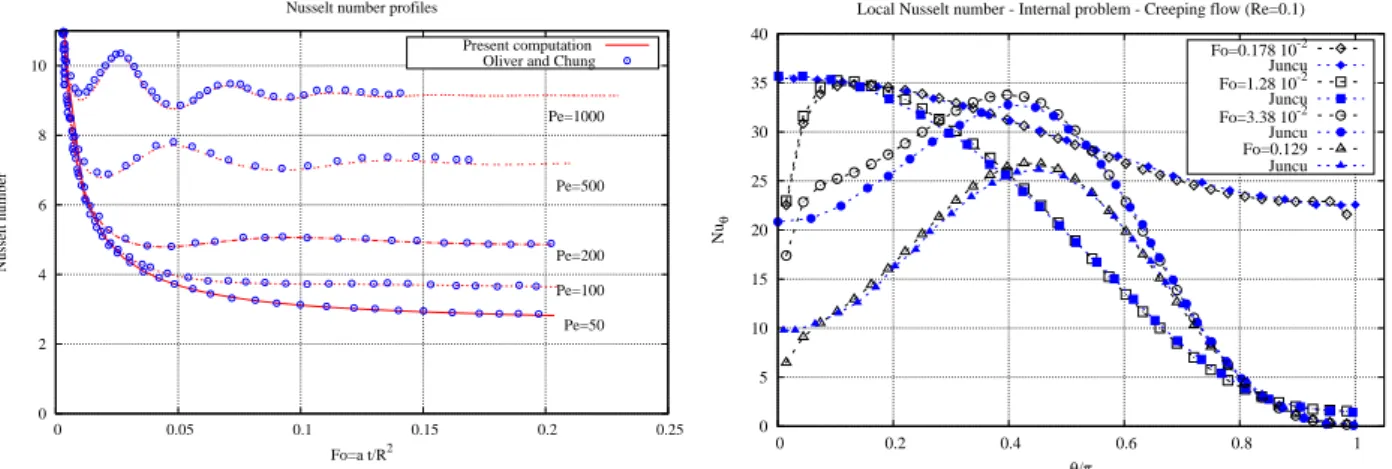Direct numerical simulation of heat transfer from liquid droplet in a continuous immiscible liquid phase
Texte intégral
Figure

![Figure 3 compares the time evolution of the Nusslet number, predicted by our simulation with data from Oliver and Chung [2] for droplets in the creeping flow regime (Re = 0.1).](https://thumb-eu.123doks.com/thumbv2/123doknet/13012451.380719/6.892.275.618.593.900/figure-compares-evolution-nusslet-predicted-simulation-droplets-creeping.webp)


Documents relatifs
Abstract : We proposed a study digital, by finite difference, heat transfer in a multilayer wall (three layers) subjected to radiation condition on the inner side and taking
We proposed a study digital, by finite difference, heat transfer in a multilayer wall (three layers) subjected to radiation condition on the inner side and taking into account
Special emphasis is given to detail the effect of the Rayleigh number and blocks height on the heat transfer and the mass flow rate generated by natural convection.. 577
Numerical simulation of conjugate heat transfer and surface radiative heat transfer using the P 1 thermal radiation model: Parametric study in benchmark cases.. Carlo Cintolesi,
In the present study, using 16S rRNA high-throughput amplicon sequencing, we determined that the aphid Cinara strobi harbors not two, but three fixed bacterial symbionts:
(A) Volumic production of extracellular pigments obtained in DMD (Defined Minimal Dextrose broth) submerged culture; (B) in PDB (Potato Dextrose Broth) submerged culture; (C)
L’archive ouverte pluridisciplinaire HAL, est destinée au dépôt et à la diffusion de documents scientifiques de niveau recherche, publiés ou non, émanant des
The comparison between the magnetic coupling and electric coupling calculation allows to identify an electric field rejection insufficient above f20dB=164 MHz. This is confirmed